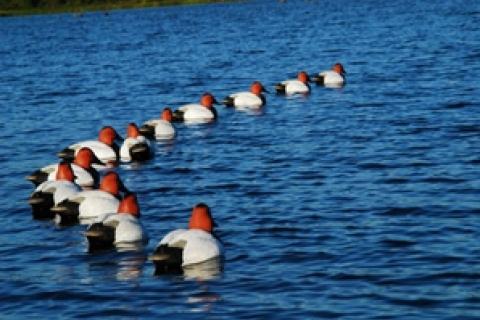
 Every aspect of our society has become so pigeon holed, we all have become victims of the cookie cutter syndrome. If we see it on TV, or in a slick magazine, we copy it. It is called mass merchandising. And it works on the masses to relieve us of our hard earned money.
Every aspect of our society has become so pigeon holed, we all have become victims of the cookie cutter syndrome. If we see it on TV, or in a slick magazine, we copy it. It is called mass merchandising. And it works on the masses to relieve us of our hard earned money.
Unfortunately, mass merchandising also relieves us of our personal identities and thinking abilities. We follow the leaders and become just another cookie in the jar.
As waterfowl hunters, we make look sharp enough, with our latest camo pattern, best waders, super shotguns and realistic looking decoys to make the next outdoor products catalog, but our conformity helps us miss the mark when it comes to harvesting ducks.
Some say looking sharp helps us act sharp. I do not disagree. However, when we look like every other hunter up the flyway and our decoy spreads only duplicate what migrating ducks have already seen a 1,000 times; the wily birds often avoid us.
Mallards are popular among waterfowl hunters and it shows. Many hunters go with solid mallard decoy spreads. The spreads do look sharp, so much so that a catalog designer could have laid out the real imagery dekes.
If you want to kill more ducks, begin by changing up your decoy spread. Add some variety. Toss a handful of pintail decoys to one side. The brilliant white of the pintail decoys will be seen by ducks long before the standard mallard decoy.
In the wild, ducks often fly in mixed species groups. Mix yours up as well. Toss in a few decoys representing other species. Shoveler males are brightly colored and will help fool wary migrators. I know they don’t fit the high class bill of mallards, but they are a drawing card. If you are ashamed of them, keep them in a separate bag where they can’t be seen. If your buddies poke fun, simply ask them if they would like to kill more ducks. Most will drop the ribbings after the first hunt.
Any species of duck decoys will help improve the attractiveness (to ducks) of a decoy spread. However, it is important to remember the peculiarities of each species. I sometimes toss a dozen bluebill dekes 15 yards to one side of my main set. I place the bluebill fakes very close together, or on a line. They often bunch up, or swim in single file. Teal also cluster tightly. I like to place them very near the bank, especially in a sunny location.
If you really get into the idea of multi-species decoy sets and have weathered the storm of teasers tossed at you by your hunting buddies, go the ultimate route and pack 25-30 coot decoys along. Coots are great confidence decoys. They travel en masse and feed voraciously. Attach jerk strings to several of the coot decoys to bring them to life.
Many duck species simply cannot resist settling in near a bunch of coots. Wigeon are especially vulnerable.
A last tip: Don’t hide the coot decoys from public view. The cookie cutter duck hunters will give you a wide berth. That really cuts down on the competition.
- 3775 views

